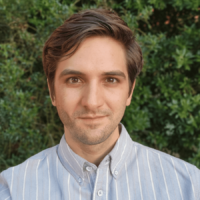Nuclear-level Effective Theory of Muon-to-Electron Conversion: Formalism and Applications
Nuclear-level Effective Theory of Muon-to-Electron Conversion: Formalism and Applications
View
Abstract
New mu-to-e conversion searches aim to advance limits on charged lepton flavor violation (CLFV) by four orders of magnitude. By considering P and CP selection rules and the structure of possible charge and current densities, we show that rates are governed by six nuclear responses. To generate a microscopic formulation of these responses, we construct in non-relativistic effective theory (NRET) the CLFV nucleon-level interaction, then embed it in a nucleus. We discuss previous work, noting the lack of a systematic treatment of the various small parameters.
Because the momentum transfer is comparable to the inverse nuclear size, a full multipole expansion of the response functions is necessary, a daunting task with Coulomb-distorted electron partial waves. We perform such an expansion to high precision by introducing a simplifying local electron momentum, treating the full set of 16 NRET operators. Previous work has been limited to the simplest charge/spin operators, ignored Coulomb distortion (or alternatively truncated the partial wave expansion) and the nucleon velocity operator, which is responsible for three of the response functions. This generates inconsistencies in the treatment of small parameters. We obtain a “master formula” for mu-to-e conversion that properly treats all such effects and those of the muon velocity. We compute muon-to-electron conversion rates for a series of experimental targets, deriving bounds on the coefficients of the CLFV operators.
We discuss the nuclear physics: two types of coherence enhance certain CLFV operators and selection rules blind elastic mu-to-e conversion to others. We discuss the matching of the NRET onto higher level EFTs, and the relation to mu-to-e conversion to other CLFV tests. Finally we describe a publicly available script that can be used to compute mu-to-e conversion rates in nuclear targets.





